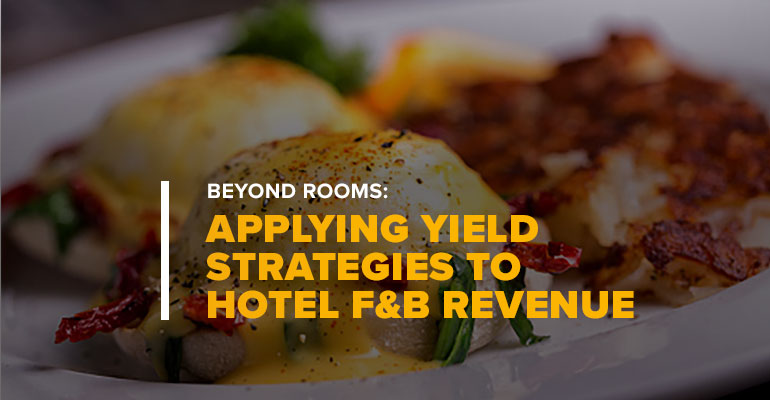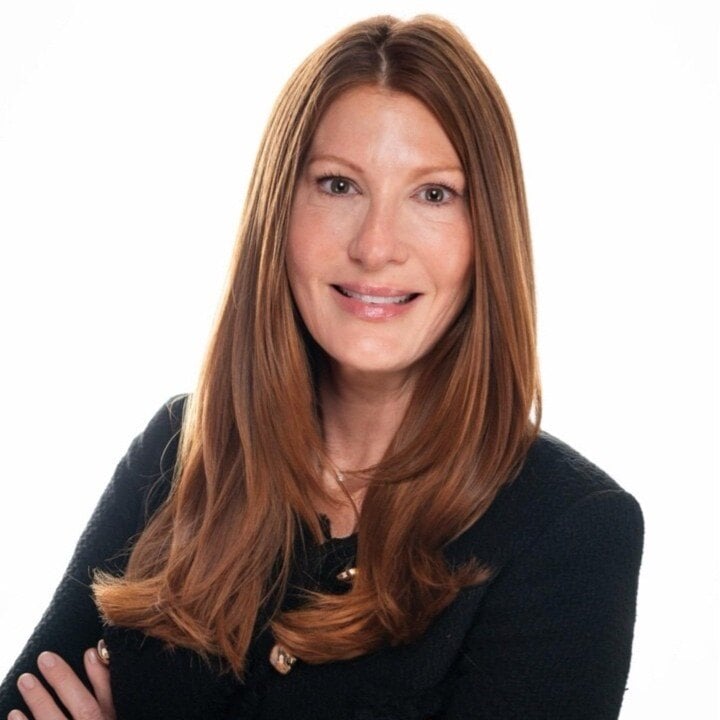November 11-12, 2018 - By Mark Heymann, Chairman & CEO, UniFocus - Published in Hotel Executive – Hotel owners and operators have long used yield management to optimize room revenues. For instance, it's considered smart business for reservations to decline a booking for a one-night stay on Tuesday, even when a room is available, if forecasts indicate that someone else is likely to want that room for Monday through Wednesday. By rejecting the one-night stay, the hotel potentially gains two additional nights of revenue that would otherwise be lost. Hotels that employ such strategies have experienced significant gains in room revenue. And yet those same hotels often overlook other service areas that would similarly benefit from a yield management approach – in particular their food and beverage operations.
Yield management was pioneered in the 1980s by the airline industry, spurred by deregulation and the rise of global distribution system technology. A pricing strategy, it is based on the premise that different consumers will be willing to pay different prices for the same product. It is designed to generate the maximum possible revenue from a perishable resource – whether that resource is an airline seat or hotel room.
Like an airline seat or hotel room, a restaurant seat is a perishable item. For every meal period in which it sits empty or underutilized or is occupied by a low-spending vs. high-spending customer, that seat represents lost revenue that will never be recovered, no matter what. Today's business is today's and tomorrow's is tomorrow's. That's where yield management comes in. The goal of yield management is to have every seat occupied by the best possible customer at every opportunity. And an effective labor management system provides the smart staffing and scheduling, plus the key forecasting capabilities, to make that possible.
Prioritizing High-Revenue Versus Low-Revenue Diners
It's not just having any customer at the table that matters. It's having the right customer. If a customer orders a low-revenue item like coffee and Danish, his or her seat is not available for a potential customer who would have ordered a full breakfast. If that second customer declines to wait and decides to dine elsewhere, the difference in meal revenue represents lost income for the hotel.
On the rooms end, hotels use yield systems to determine the best customer. But they are less effective at looking at their food and beverage customer mix and tracking what those customers are buying. As a result, low-revenue customers too often tie up seats that could accommodate high-revenue customers. Poor seat utilization can also impact total revenue. For example, despite an extensive waiting line, a restaurant host seats a party of two at a table for four that has been created by pushing two two-tops together. By not separating the two-tops, a table that could have been made available to another party of two is wasted and potential revenue left unrealized.
Here's one solution, particularly when there is a high volume of available guests: If a hotel restaurant is serving a mix of continental and full breakfast, management might find that opening the bar area in the morning to accommodate guests who want continental breakfast makes it possible for the restaurant to seat more guests who want a full breakfast. Such a move can measurably improve the hotel's breakfast revenue.
When Volumes Increase But Penetration Declines
In food and beverage operations, there is a tendency to measure performance based on revenue per staff hour. When that number is high, however, operators might be missing more sales because of density and time. Looking at revenue per available customer offers a better metric of performance than revenue per staff hour.
Hoteliers need to better understand how much revenue they are foregoing even as volumes are on the rise. Starting with an accurate forecast of the available market (for example, the number of guests at the hotel who could potentially buy breakfast there), it makes sense that as that number increases the cover count also increases and revenues correspondingly rise. But when a hotel reaches high levels of available customers, something happens: while absolute numbers of customers served continue to increase, penetration often declines, due to less than optimal management decisions – in particular around scheduling and staffing.
Compare two circumstances of the same food and beverage operation. On a day of high available customers, it serves 300 covers on an available market of 500; on another day it has 150 covers on an available market of 200. While the first instance has more covers, it is penetrating only 60 percent of its potential market. In the second example, the restaurant is achieving a penetration of 75 percent. That 15-point difference translates to roughly 75 covers lost on the day with a 500-available market – far from an optimal result, whether due to a lack of table availability, poor seat utilization, insufficient staffing or a combination of these factors. Once hoteliers truly understand how much potential revenue they are leaving on the table they can take steps to closing that gap.
Marketing Initiatives and Yield
Adding to the complexity of managing food and beverage yield in a hotel environment is the impact other departments can have on restaurant demand. If the hotel is offering a travel package that includes breakfast, or perhaps dinner for two, and rooms have been booked with that package, those guests will in all likelihood dine at the hotel. The package guest has a higher propensity to buy (in other words, eat the meal they contracted for) than the non-package guest. If the forecasting process does not account for this while projecting total covers, scheduling will not account for the increased volume either. The insufficient staffing could lead to long waits or unavailability of reservations that can drive other potential customers, and their revenue, away.
Bridging the Gap Between Actual and Potential Customer Counts
Optimizing food and beverage revenue, then, takes looking at more than the absolute customer count. It requires understanding total demand versus the demand the restaurant is able to service. (Or put another way, the percentage of customers who would like to eat at the restaurant versus those who ultimately do). Historically, however, food and beverage operations have done a poor job of tracking the number of would-be customers who walk away and the reasons they do so. What a difference it could make for a manager to review with the host which customers ultimately left and, if possible, determine the reasons they did so. That kind of reconnaissance could provide vital data points to create better yield strategies.
Scheduling Technology Can Help
Having sufficient staff in place at times of high demand, coupled with better seat utilization, is one optimization strategy. For example, changing the ratio of bus staff to servers at such times increases speed of table turns and therefore the number of seats available in a meal period, decreasing the likelihood of potential customers walking away. The issue then becomes what happens when the peak period is over? Those additional workers might only be needed for 1.5 hours but often minimum shift laws require keeping them for longer periods. In this kind of dynamic environment, with demand changing by the hour, a good scheduling system driven by accurate forecasts is indispensable to help create a least-cost environment while also focusing on revenue results. Cross utilization of labor, a key feature of state-of-the-art scheduling technology, also can play a role in reducing lost productive time.
A Constant Balancing Act
In fact, optimizing revenues in food and beverage operations requires that management constantly balance a variety of factors, from absolute numbers to revenue per customer, labor costs and meal period contribution margin. Focusing solely on cost percent of revenues, as happens all too often, creates a mindset that does not drive the most dollars to the bottom line.
In high- and peak-demand environments, labor percentages can be low but revenue may still be foregone. If a server handles 20 covers in an hour, the labor cost percent will be better than that of a server who handles 15 covers in the same period. But what if serving the 20 customers at a slightly slower pace caused tables to not turn as quickly and 10 customers walked away without purchasing a meal? In this case, going with 15 covers per hour will precipitate bringing on an additional server, raising the labor cost percent, but the increase might well recover those 10 lost patrons. Finding the right balance requires accounting for potential customers in the planning process and measuring the penetration of that market. Sometimes a small increase in labor percent can yield a larger top and bottom line.
Another example: consider a bar/beverage operation with high customer volume. Traditionally, hotel bars are staffed using a fixed revenue per hour, or percentage of sales, metric. In my experience, however, this approach might be sufficient when the outlet is underpopulated, but when the room fills and density increases, the better strategy is to drop the revenue-per-hour number, especially for the service staff. This new calculation will trigger bringing on additional staff to handle the full demand. That ensures customers aren't waiting too long with an empty glass – or worse, leaving in frustration and taking dollars they had planned to spend with them. It might require a bit of a different mindset but, once again, increasing spending on staff in response to customer yield can result in increased sales that more than offset the additional spend.
Hotels that are willing to make the effort to look at restaurant seats – and customers – as perishable, will be rewarded with the same kind of gains on the food and beverage side that similar yield strategies have already brought to their rooms operations. It's about time.







